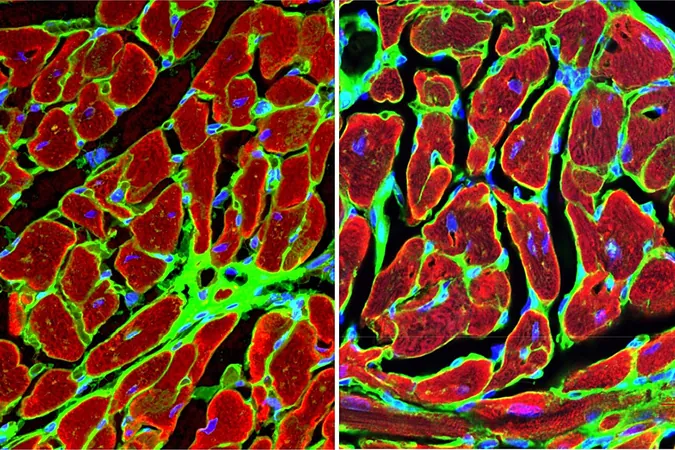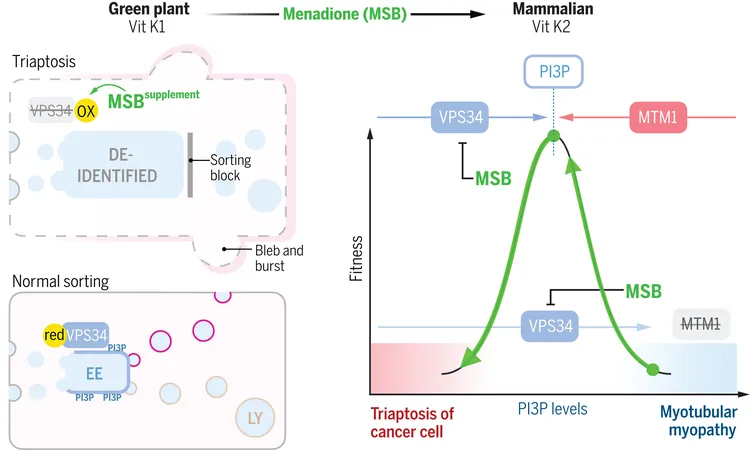
Revolutionary Discovery: How a Secret Protein Could Transform Heart Recovery!
2024-10-25
Author: Daniel
In a groundbreaking study, researchers at UCLA have unveiled a pivotal protein known as GPNMB that plays a crucial role in the heart's healing process following a heart attack. This discovery arrives at a vital time as heart disease remains the leading cause of heart failure, affecting millions worldwide.
Utilizing advanced animal models, the scientists found that immune cells derived from bone marrow, specifically macrophages, secrete GPNMB. This protein then binds to a previously obscure receptor, GPR39, which stimulates heart repair. These findings not only deepen our understanding of cardiac healing mechanics but also pave the way for innovative treatments that could enhance heart function and stave off heart failure.
Each year in the United States, someone suffers a heart attack every 40 seconds, leading to significant scarring within the heart that limits its ability to pump blood effectively. This scar tissue is initially protective but can become a permanent obstacle to recovery, ultimately contributing to heart failure in numerous patients.
While prior clinical studies have linked GPNMB—short for glycoprotein non-metastatic melanoma protein B—to cardiovascular outcomes in heart failure patients, the exact nature of its role remained unclear until now. Researchers aimed to determine if GPNMB was merely a marker of heart failure or if it actively influenced the condition’s development.
Remarkably, the research indicated that GPNMB is not produced by the heart itself but is generated by inflammatory cells in response to injury. Post-heart attack, these macrophages migrate to the damaged area, expressing GPNMB to facilitate healing. Through gene knockout experiments and bone marrow transplants, the researchers established that mice lacking the GPNMB gene suffered far worse outcomes after a heart attack, facing higher risks of heart rupture, a severe condition also common in human heart failure patients.
Conversely, mice that retained normal levels of GPNMB exhibited improved heart function and less scarring when given an enhanced dose of the circulating protein. In fact, four weeks after experiencing a heart attack, a staggering 67% of mice deprived of GPNMB faced severe scarring, compared to a mere 8% in the control group.
Interestingly, this study also revealed that GPNMB binds with GPR39, an orphan receptor until now considered without a known ligand. This interaction signals the ignition of processes that promote tissue regeneration and mitigate scarring.
Cardiovascular disease is a rampant health crisis, responsible for nearly one-third of all global deaths. Despite its prevalence, there are currently no treatments specifically aimed at boosting the heart's self-repair mechanisms post-heart attack. The implications of this research not only suggest that GPNMB could serve as a novel therapeutic agent but also highlight GPR39 as a promising target to reduce scarring and improve heart function, potentially preventing heart failure.
Looking forward, the influence of GPNMB may extend beyond just heart repair; researchers are eager to investigate its role in healing other organs such as the brain and kidneys that are affected by ischemic injuries.
As we stand on the brink of potential new heart failure treatments, the critical functions of GPNMB and GPR39 could reshape the future of cardiovascular medicine! Don’t miss out on the latest developments in heart health – stay informed and ready for transformative breakthroughs!



 Brasil (PT)
Brasil (PT)
 Canada (EN)
Canada (EN)
 Chile (ES)
Chile (ES)
 España (ES)
España (ES)
 France (FR)
France (FR)
 Hong Kong (EN)
Hong Kong (EN)
 Italia (IT)
Italia (IT)
 日本 (JA)
日本 (JA)
 Magyarország (HU)
Magyarország (HU)
 Norge (NO)
Norge (NO)
 Polska (PL)
Polska (PL)
 Schweiz (DE)
Schweiz (DE)
 Singapore (EN)
Singapore (EN)
 Sverige (SV)
Sverige (SV)
 Suomi (FI)
Suomi (FI)
 Türkiye (TR)
Türkiye (TR)